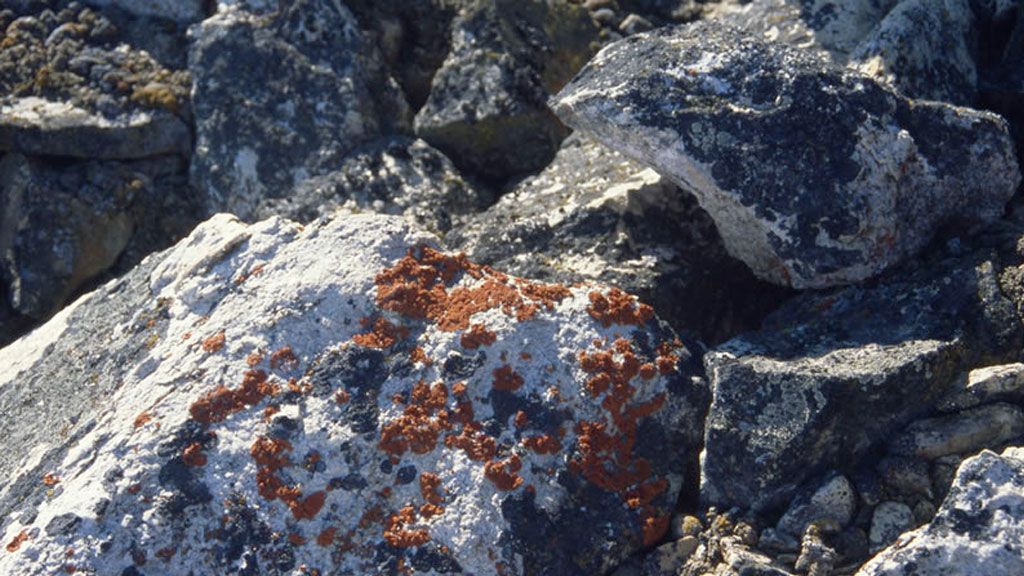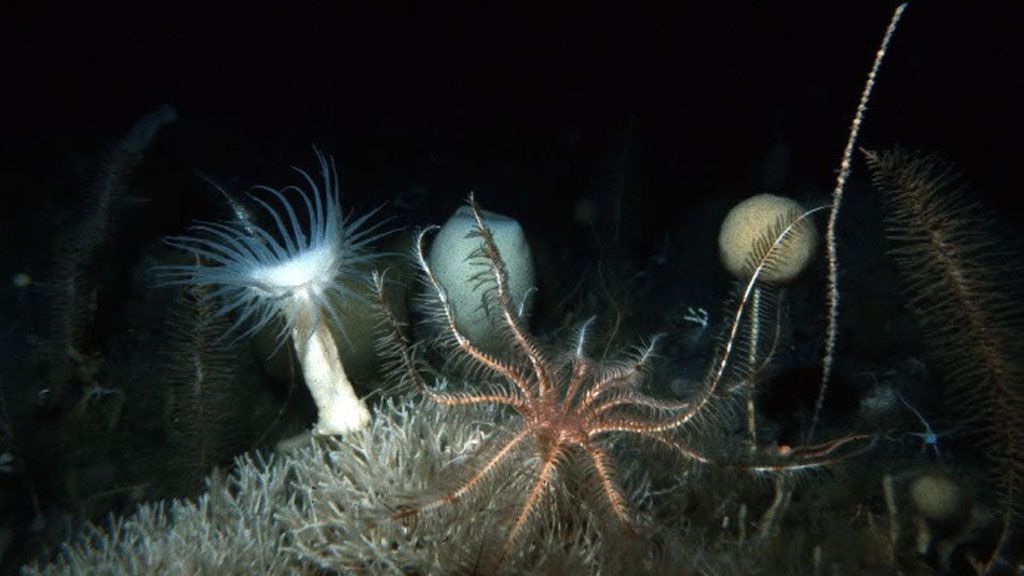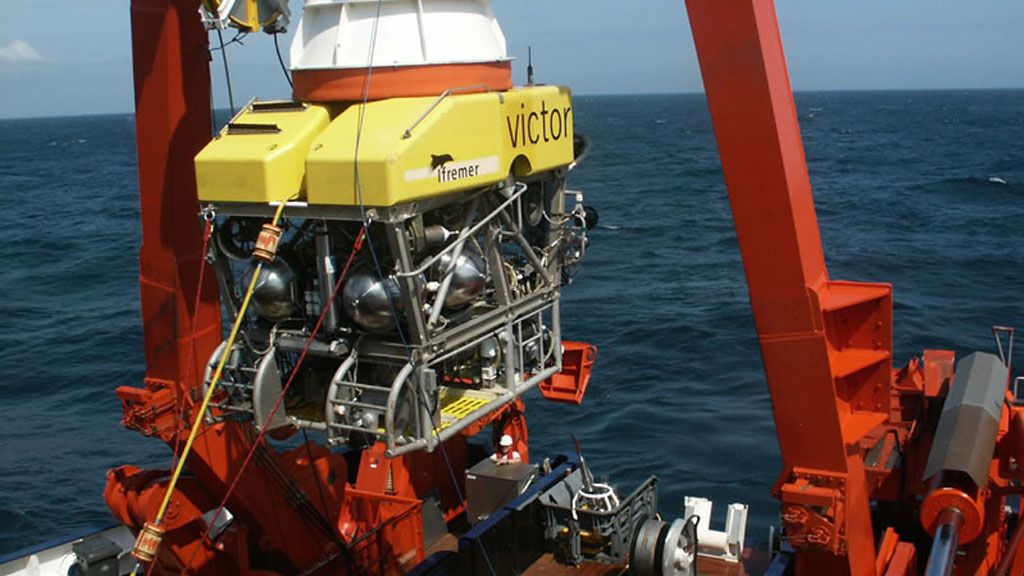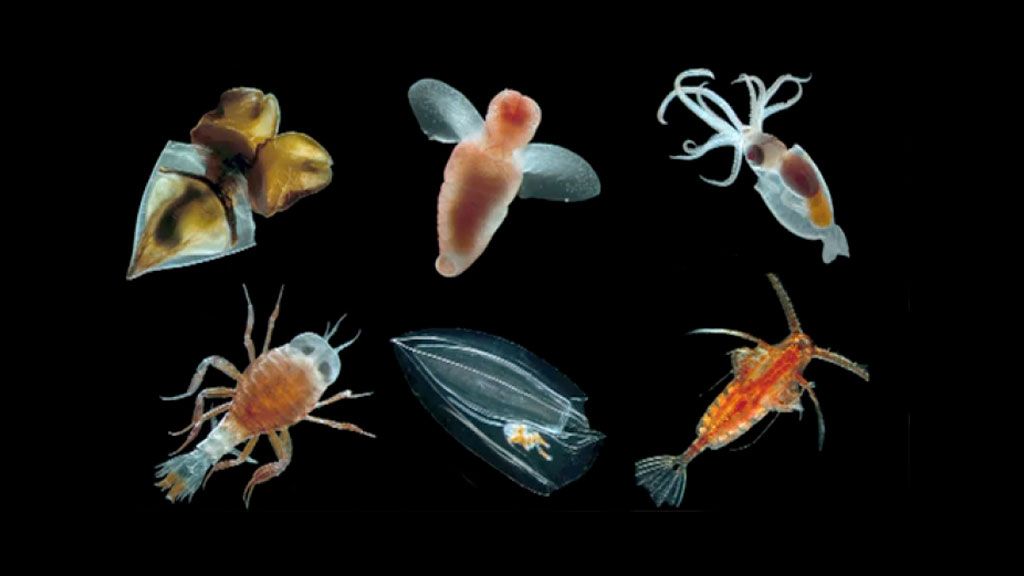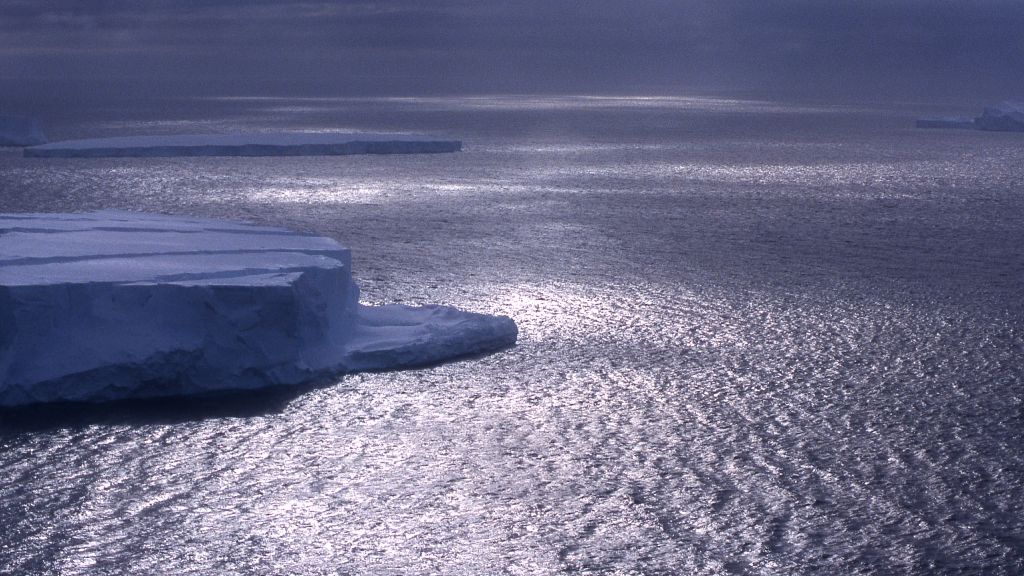What can the genetic makeup of Antarctic springtails tell us?
Lichens, seen on these rocks, are a common springtail habitat in Antarctica
© Francesco Frati
For as long as life has existed on Earth, environmental factors have had a significant influence over where a particular organism can live and to what extent it can thrive. Yet the environment can also ultimately influence the genetic structure of a given population of organisms, as Professor Franceso Frati from the University of Siena in Italy and his colleagues have been investigating in their study of springtails over the past 15 years with the support of the Italian Antarctic Research Programme (PNRA).
Springtails are hexapods similar to insects - the major difference being that they have internal mouth organs, not external ones like insects do. Numerous species of springtails can be found just about everywhere on the planet, including the Antarctic. Springtails are the dominant exclusively terrestrial animal on the Antarctic continent (penguins, for example, spend a good part of their life in the water, so they cannot be considered exclusively terrestrial animals). The ubiquity of springtails coupled with their relatively short life spans of one to two years makes them an ideal species to study how environmental factors can affect the genetic structure of organisms.
What kind of research are you doing at Terra Nova Station?
Our group of researchers is mostly focused on the origin and evolution of Antarctic springtails, which are tiny soil invertebrates. These tiny creatures are the only arthropods aside from mites that live on the Antarctic continent, and they dominate the terrestrial ecosystems. In fact springtails are the largest strictly terrestrial animal currently living in Antarctica.
Our project is focused on determining how these animals evolved in Antarctica, where they came from, and what kind of influence their particular environment has had on the genetic structure of the different populations. We are using methodologies aimed at describing the genetic structure of the populations in order to attempt to assess whether the genetic variations are affected by the particular structure of the environment.
Another issue is to assess whether populations are genetically differentiated, even across short geographic distances. One of the things we've demonstrated in our research on several different species is that in many instances species are sub-divided into populations which are genetically isolated from one another. This is probably due to the fact that there are several different sites where these animals can survive. However these sites are all isolated from one other, usually by large areas of ice cover or frozen ground, which is a hostile environment for these animals.
What else have you been able to learn about these springtails?
We've been able to show that levels of gene flow - which is the movement of individual genes from one population to another - are very limited at the present time, and were also likely very limited in the past. From the point of view of the reconstruction of the history of these populations in Antarctica, our studies in collaboration with research groups from other countries such as those led by Mark Stevens (Australia), Ian Hogg (New Zealand) and also Pete Convey (from the British Antarctic Survey) have demonstrated that during the glacial periods (the time during which the continent was covered in ice) when the large part of the continent was covered by ice, springtails probably survived in small refugia. After the glacial period ended, the springtails subsequently dispersed from the refugia.
Another interesting outcome of our research is that one particular species, Friesea grisea, which is believed to be the only springtail species living in both the Antarctic Peninsula and Victoria Land, is actually made up of two highly differentiated groups of populations. We were able to identify these differentiations by sequencing the entire mictochondrial genome from individuals taken from each of the two distribution areas of the creature. A study which has recently been submitted for publication demonstrates that the genetic divergence of the genomes of the two sample creatures is so high that they are most likely two different species. In Antarctica individuals of closely related species tend to have a much higher genetic divergence than a morphological divergence (physical appearance) between the two species.
What implications does the fact that springtails living in Victoria Land and those living on the Antarctic Peninsula are genetically isolated?
One implication is that we've been using the Antarctic ecosystem as a model of how animals evolve from a genetic point of view when faced with certain environmental factors. There are also implications linked to genetic studies, namely using the genetic structure of a population as a marker of environmental transformations.
Our work is also highly relevant at a time when everyone is interested in global climate change. As climate changes, this could have implications on the genetic structure of a population. The reason is that climate determines land ice cover, and land ice cover determines the availability of suitable sites for these creatures to live. So as glaciers melt and more land becomes exposed, this will increase the habitat of springtails and potentially increase the gene flow, especially between previously isolated populations.
So by getting a complete picture of the genetic structure of the populations, we can get an idea of how climate change might affect a given population and help us identify certain markers for climate change in the genetic makeup of springtails.
How long have you been looking at springtails specifically and have you noticed any genetic markers that might be linked to climate change? Is the lifespan of a springtail short enough to be able to notice any changes over several generations?
The lifespan of a springtail is between one and two years, which means they tend to have a longer lifespan than similar species of springtail you find in temperate regions. Right now, even though we've been doing research in Antarctica for 15 years, so far what we've been able to achieve is a complete picture of the present situation. Looking towards the future, we're going to need to continuously collect samples on a long-term basis in order to have a better idea of whether climate change is influencing the genetic structure of populations and to what extent if it is. For example, you can assess increasing genetic variability by surveying a large area and assessing whether new habitable sites have become available to the springtails and whether populations have expanded into these newly habitable areas. Because we were able to identify an increase in the area covered by an expansion of the springtail population, we expect that if climate change brings about warmer temperatures, we will have a further increase in the population of springtails.
Would an increase in population also portend an increase in genetic diversity?
Not necessarily. When you have a sudden explosion in a population, you will probably find many more sites where the springtails have the same genetic structure of the original population from which the animals came. Then evolution will tend towards a differentiation of the different populations - as long as gene flow stays low between populations.
However if gene flow increases, this will have a consequence on the populations of homogenizing the genetic structure of the different populations. So if gene flow increases due to warmer temperatures and climate change, then we would expect to have more homogenous populations as a result.
So far you've looked at samples of springtails from Victoria Land and the Antarctic Peninsula. Can they be found elsewhere in Antarctica as well?
Springtails live only in deglaciated areas. Since the largest deglaciated areas of Antarctica can be found in Victoria Land and on the Antarctic Peninsula, this is where you find the largest number of springtails. They can also be found in other parts of Antarctica, but we've only had the opportunity to collect specimens in Victoria Land and the Antarctic Peninsula. Our sampling limited to the opportunities afforded to us in these two places.
However we are happy for the opportunities we've had through international cooperation. Antarctica is a place where international collaboration between different countries is at a maximum, due to the logistical challenges one faces in Antarctica, and since we all share the desire to add to the wealth of human knowledge. For example, thanks to presence of Scott Base (New Zealand) and McMurdo Station (USA) in Victoria Land in addition to the Italian Terra Nova Station, we've been able to take samples along most of the coastline from the McMurdo area up to Cape Adare, a distance of about 800 km or so. An Italian team also had the opportunity to take samples from the Antarctic Peninsula thanks to our collaboration with the British Antarctic Survey, when they were hosted on a British ship traveling from the Falkland Islands down to the British station, Rothera, and were able to stop several places along the way and collect springtail samples from over 20 different sites, covering most of the length of the Antarctic Peninsula.
How does you research program fit into the overall structure of the Latitudinal Gradient Project?
The relationship between our project and the LGP is that if there is a latitudinal gradient in terms of temperature, we would expect for example differences in the density of organisms at different latitudes. Actually what we've observed is that latitude is not the only thing that influences the genetic structure of springtails and their distribution area. Other forces influence the distribution and the genetic diversity of springtails. These include things such as the structure of the terrestrial communities, including soil texture and distance from the sea, for example. These forces are even more powerful in affecting the distribution of the species.
One interesting feature in Victoria Land is that major glaciers such as the David, the Campbell, the Mariner and the Aviator Glaciers act as barriers to the movement of individuals and they act as barriers over long periods of time, thereby determining the current distribution of species.
If we divided Victoria Land into three areas from north to south, we would find that in the north there is a dominant species of springtail, and its distribution ends at the Mariner Glacier. South of the Mariner Glacier in the central part of the Victoria Land Coast you find another dominant species of springtail, which is nonetheless very similar to the northern species. And south of the David Glacier you see yet another dominant species. So you basically have three major regions, and in each region there's a dominant springtail species, and the major glaciers serve as boundaries to its natural distribution area.

Francesco Frati
Francesco Frati is Vice Rector and Professor of Zoology in the Faculty of Mathematical, Physical and Natural Sciences at the University of Siena. Upon completing his doctorate degree at the University of Siena, he undertook post-doctoral studies in the United States. He has participated in three expeditions to Antarctica as part of of the Italian Antarctic Research Programme (PNRA). He currently teaches evolutionary biology at the university.

